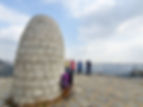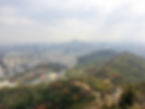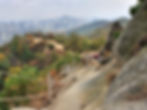
Seodaemun Independence Park 서대문독립공원
& Prison History Hall 서대문형무소역사관
Seodaemun Prison History Hall:
Mar-Oct: 9:30 - 18:00
Nov-Feb: 9:30 - 17:00
Last admission: 30 mins before closing.
Closed every Mondays (if Monday is a holiday, closed on Tuesday), Seollal (Lunar New Year's Day) and Chuseok (Korean Thanksgiving Day).
Independence Park: 24hrs
Seodaemun Prison History Hall:
-
Adult (age 19-64): 3,000 won, Teenager (age 13-18): 1,500 won, Child (age 7-12): 1,000 won
-
Free for Adult above 64 and Child under 7
Independence Park: Free
-
Dongnimmun Station (line 3, exit 4/5). For Seodaemun Prison History Hall, take exit 5 and walk 50m to Prison's entrance.
www.sdm.go.kr, parks.seoul.go.kr & sphh.sscmc.or.kr (for Prison History Hall)
The Independence Park is an important historical and cultural site to commemorate the Korean patriots and independence activists during the Japanese colonial period that lasted for 35 years, from 1910 to end of World War II in 1945.




Prior to the park's opening on 15 August 1992, access to the area was strictly forbidden and avoided by local residents.
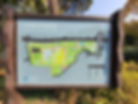

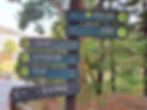
There are various memorials, statues of patriots, monuments, library and a prison museum in the park.
a) Seodaemun Prison History Hall
One of the main places to visit at Seodaemun Independence Park is the museum, Seodaemun Prison History Hall.
Seodaemun Prison was built by the Japanese Empire to house political prisoners and independence activists during the Japanese occupation (1910-1945).


The prison was first named as Gyeongseong Prison in 1908, renamed to Seodaemun Jail in 1912, Seodaemun Prison in 1923, Seoul Prison in 1945, Seoul Penitentiary in 1961 and Seoul Detention Center in 1967.
When Seoul Detention Center was relocated in 1987, the area was redeveloped as a memorial Park, Seodaemun Independence Park.


To retain its historical significance, Seodaemun Prison History Hall was opened as a museum to the public on 5 November 1998.
Visitors can learn about the history and sacrifices made by Koreans toward democracy and freedom at Seodaemun Prison History Hall.


Seodaemun Prison History Hall is also a popular filming location for many Korean dramas on scenes when the characters are released from the prison.
These K-dramas include Goblin (2016-17), Father, I'll Take Care of You (2016-17), Hide and Seek (2018), Doctor John (2019), etc.


Among the buildings preserved include the Leper’s Building for isolating inmates contracted with leprosy, Execution Building, Corpse Removal Exit for taking bodies out from the prison and Underground Interrogation Room.



b) Gate of Independence (Dongnimmun Gate) & Independence Square
The Independence Gate was built as a symbol of Korea's independence. Measuring 14.28m high and 11.48m wide, it is the first Western-style building in Korea modelled after the Arc de Triomphe in France. It was designated as Historic Site No. 32 on 21 January 1963.


c) Statue of Seo Jae-Pil
The statue was erected to honour Seo Jae-Pil whom devoted his life to Korea's independence movement. He published Korea's first private newspaper, 'The Independent' in 1896 and founded the Independence Association.


d) Independence Hall (Dongnipgwan)
The Independence Hall was originally built in 1407 to receive Chinese envoy during Joseon Dynasty.
It was later used as the meeting place of the Independent Association. The building was then demolished by Japan Imperialism to oppress any Korean independence movement.
The building was only restored in 1997.

e) Declaration of Independence Monument
The Declaration of Independence Monument was originally located in Tapgol Park and was restored at Independent Park in 1992.
Thirty-three names of the independence activist leaders and the verse of Independence Declaration were engraved on the wall.

f) Patriotic Martyr Monument
Patriotic Martyr Monument was erected on 15 August 1992 to commemorate the ancestors' hardship and struggles for Korea's independence from Japanese invasion.


g) Lee Jina Memorial Library
In memory of their daughter, Lee Jin-a whom passed away in an accident, her parents donated funds to build the library. The library was opened on her birthday.


h) Miscellaneous: Visitor Center, Convenience Store & Rest Area
Other facilities at Seodaemun Independence Park for visitors' convenience include the visitor center, rest area, convenience store and toilet.


Recommended Attractions Nearby
a) Ansan Jarak-gil Trail & Beacon Mound (Summit)
Follow the path next to Lee Jina Memorial Library to get on the 7km long raised wooden deck that encircles the entire circumference of Ansan Mountain. You will be rewarded with breathtaking sights along the way.
Alternatively, you can also ascend to Beacon Mound, the near summit of Ansan Mountain for panoramic view of Seoul.
b) Yeongcheon Market
Across the road from Independence Gate is the local traditional market, Yeongcheon Market.
Enjoy the many famous eats in this market like the freshly-made Kkwabaegi (Twisted Korean Doughnuts), Tteokbokki (Spicy Rice Cakes), Twigim (Tempura), Steamed Buns or even King Crabs!
Map of Seodaemun Independence Park

Map of Attractions around Seodaemun Independence Park

KoreaToDo TOP PICKS - Tours, Activities & Discount Tickets
➥ Handpicked experiences by KoreaToDo for their uniqueness, value, popularity, price competitiveness and at times, tedious to reach by public transport.
♔ KoreaToDo recommends Klook.com, Asia leading in-destination service provider.

🎷SEASONAL HOT PICKS🎷 Handpicked Experiences from Seoul
Other KoreaToDo Collection that you may like:
-
Ansan Jarak-gil Trail - Raised wooden deck that encircles Ansan Mountain. Enter from Seodaemun Independence Park
-
Gyeonghuigung Palace - 23 mins walk from Seodaemun Independence Park
-
Yonsei University - Exit from Ansan Jarak-gil Trail

